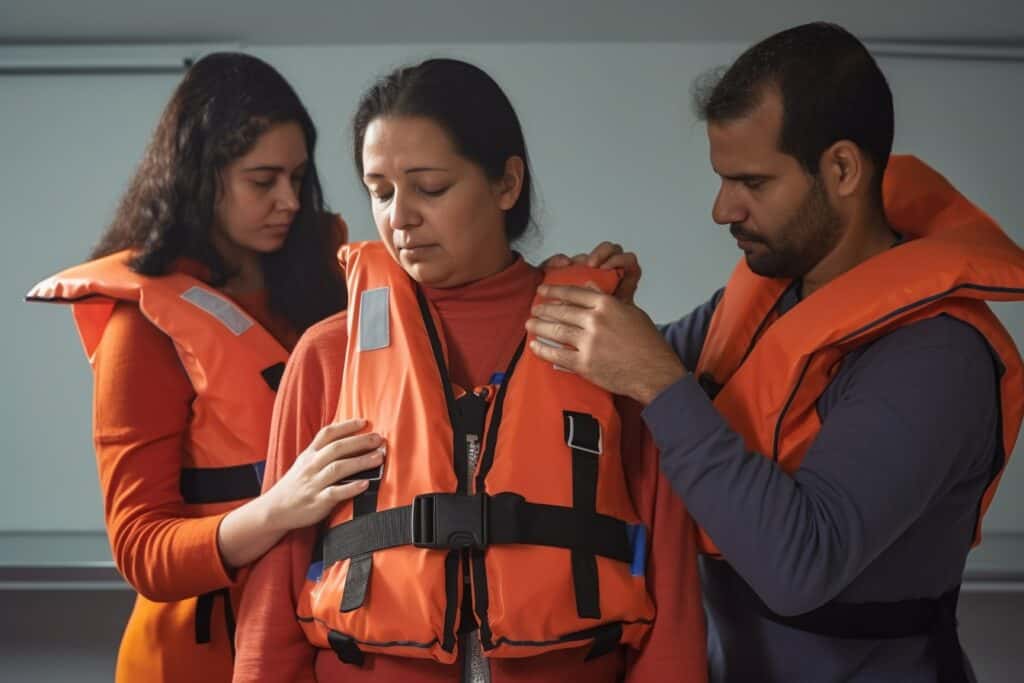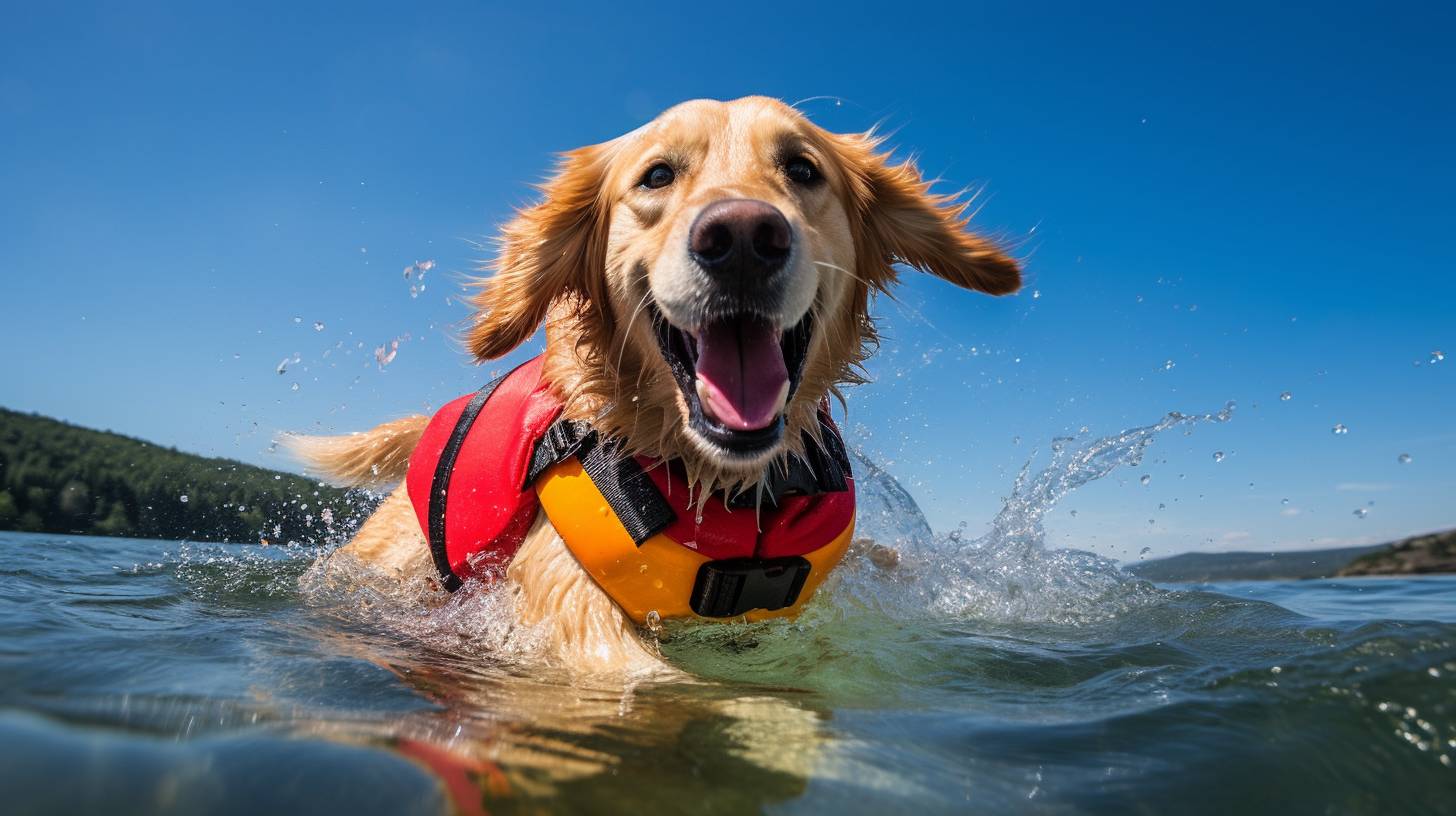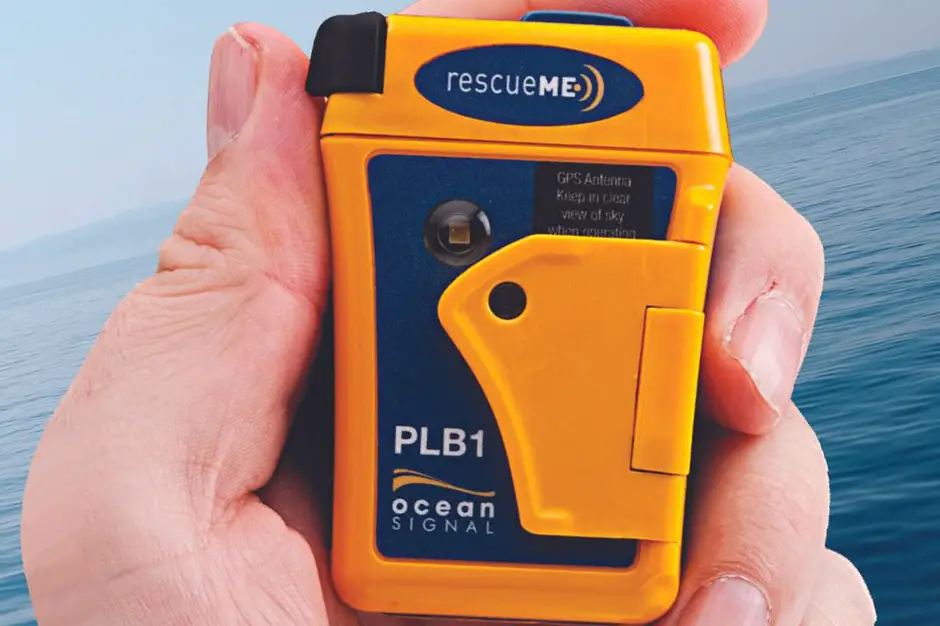You’ve finally made it to the beach or lake for a fun day on the water, and you’re all geared up with your life jacket on. While you’re excited to dive into the waves or hop on your favorite watercraft, there’s one pesky issue that could put a damper on your day – life jacket rash.
We all know that uncomfortable, itchy feeling that comes from chafing and rubbing against the material of your life jacket. But don’t worry, we’ve got you covered with tips on how to prevent that annoying life jacket rash so you can focus on having a blast.
In this article, we’ll guide you through choosing the right material for your life jacket, ensuring a proper fit and rotation, and applying anti-chafing solutions to keep your skin smooth and irritation-free. By following these steps, you’ll be able to protect yourself from life jacket rash and enjoy your water adventure without any discomfort.
So, let’s dive in and learn how to keep your skin safe and happy while you’re out on the water.
1. Choose the Right Material
To avoid discomfort, it’s essential to pick a material that’s gentle on your skin and doesn’t cause irritation. When trying to prevent life jacket rash, consider opting for a life jacket with a soft, breathable fabric like neoprene, which is known for its anti-chafing properties.
Another factor to consider when choosing the right material is the fit of the life jacket. Make sure it’s snug but not too tight, as a tight life vest can cause chafing and skin irritation. If possible, try on several life jackets before making a purchase to find the one that fits you best.
Look for adjustable straps and buckles to ensure a secure, comfortable fit. By picking the right material and ensuring a proper fit, you’ll be well on your way to preventing life jacket rash and enjoying your water activities with ease.
2. Get The Correct Fit
Ensuring the right fit and regularly rotating your gear can make all the difference in avoiding that pesky irritation.
To prevent life jacket rash, it’s crucial to find a life jacket with a proper fit for your upper body. When trying on a life jacket, make sure it’s not too loose or too tight. A loose life jacket can cause unnecessary friction and chafing, while a tight one can restrict movement and cause discomfort. While wearing the life jacket, test its fit by raising your arms above your head and asking someone to pull up on the jacket’s shoulders gently. The life jacket should stay in place and not ride up your torso.
Additionally, consider wearing a rash guard or thin wetsuit under your life jacket to reduce friction and provide a barrier between the life jacket and your skin. This added layer can make a significant difference in preventing life jacket rash and keeping you comfortable on the water.

Do Life Jacket Components Contribute to the Occurrence of Rash?
Life jacket parts are designed to enhance safety while engaging in water activities, but they may not necessarily cause rashes. The occurrence of a rash can be attributed to various factors, such as allergic reactions to the materials used, prolonged wear, or improper fit. It is crucial to choose a life jacket with suitable components and ensure proper maintenance to prevent discomfort or skin irritations.
3. Use Anti-Chafing Solutions
@ Midjourney AI Image Prompt: /imagine prompt:Create an image featuring a person applying anti-chafing cream on their neck and underarms, with a life jacket nearby, showcasing the prevention of life jacket rash. –v 5 –ar 3:2 (Note: Use –v 4 if you do not have a paid Midjourney account)
Let’s dive into some effective anti-chafing solutions to keep you comfortable and rash-free while wearing a life jacket.
We’ll discuss a smart rotation strategy, the importance of taking breaks or breather periods, and some tried-and-true anti-chafing products to help you enjoy your water activities without any irritating distractions.
a. Rotation Strategy
Switching up your swim gear frequently helps keep that annoying skin irritation at bay. A rotation strategy is an effective way to prevent life jacket rash while prioritizing safety.
Rotating out your gear is another thing to consider when wearing a life jacket for extended periods. By rotating your gear, you can help prevent the constant rubbing that leads to life jacket rash. If possible, switch between different life jackets or take breaks from wearing one to give your skin time to recover.
If you’re spending a lot of time on the boat or swimming, try to have multiple life jackets available so you can alternate between them. This way, you won’t be wearing the same wet life jacket for an extended period, which can lead to chafing and irritation. Additionally, it allows for each life jacket to dry out, reducing the likelihood of developing a rash.
b. Breaks or Breather Periods
Taking breaks or allowing for breather periods during your water activities is another effective way to keep your skin irritation-free while still enjoying the fun.
When you give your skin some time away from the life jacket, it helps prevent the accumulation of sweat and reduces the constant rubbing of the material against your skin.
Breaks also provide an opportunity to freshen up by washing off any saltwater or pool chemicals that might be contributing to the life jacket rash.
Here’s how to make the most of your break time:
- Schedule regular breaks: Plan your water activities with intervals to ensure you have time to remove the life jacket and let your skin breathe.
- Use the break time wisely: During these breather periods, take a moment to wash off any irritants, like saltwater or pool chemicals, that may be on your skin.
- Dry off your skin: Pat your skin dry with a clean towel, ensuring that you remove any residual moisture or sweat that could cause further irritation.
- Inspect your life jacket: Before putting the life jacket back on, check for any rough areas or debris that may have gotten caught in the material and could contribute to rubbing and rashes.
c. Anti Chafing Products
Life jacket rash can be a real nuisance, but luckily there are plenty of options out there to help prevent it. Before you head out to the beach, lake, or pool, make sure to apply an anti-chafing product to areas where your vest and swimsuit may rub against your skin. This will create a barrier to reduce friction and keep you comfortable all day long.
There are various types of anti-chafing products available, such as creams, gels, and balms. Some popular options include Body Glide, Gold Bond Friction Defense, and Chamois Butt’r. These products are designed to be water and sweat-resistant, making them perfect for use during water activities.
When choosing a product, be sure to pick one that is specifically designed for water use, as they will be more effective in preventing life jacket rash. Don’t forget to reapply throughout the day, especially after swimming or toweling off, to ensure continuous protection.
Enjoy your day on the water, chafe-free!





Leave a Reply